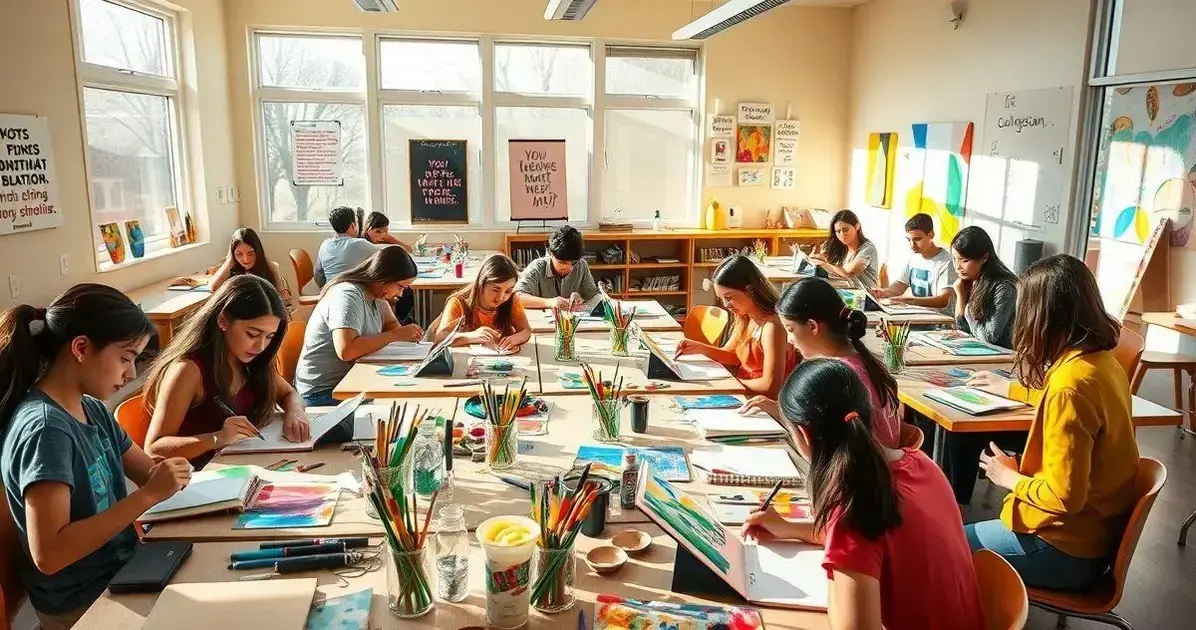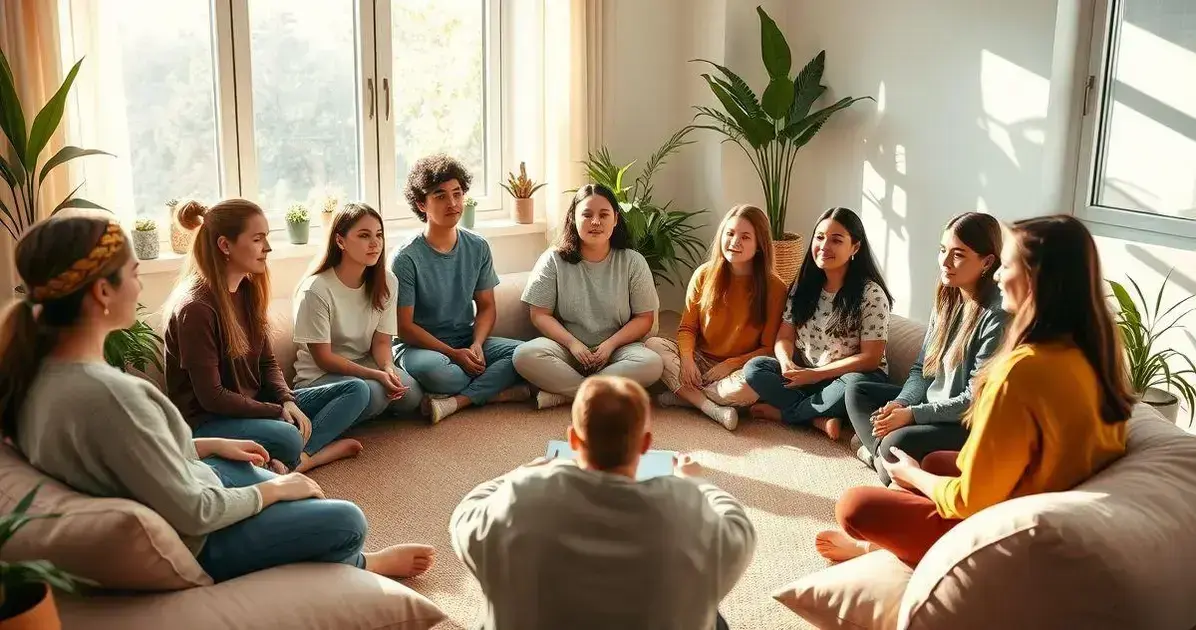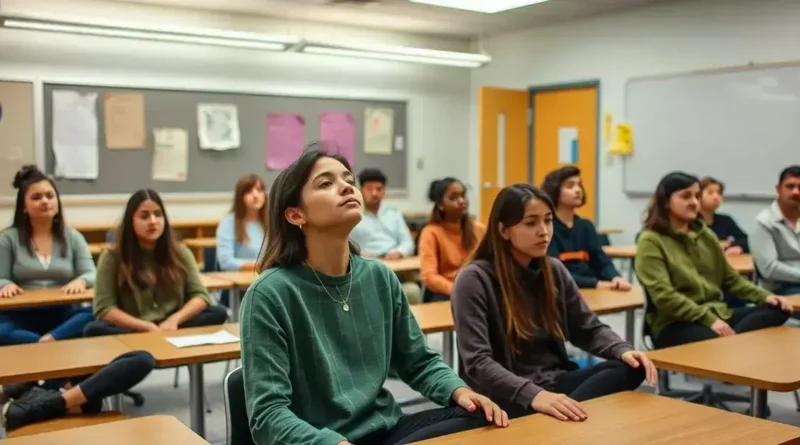Mindfulness Activities for High School Students: Boost Focus and Reduce Stress
High school is a crucial time for growth, and mindfulness activities for high school students can play a vital role.
These exercises not only help in reducing stress and anxiety, but they also enhance focus and emotional well-being.
In this article, we will explore various mindfulness techniques that teens can easily incorporate into their daily lives to promote a healthier mindset.
Understanding Mindfulness for Teens
Mindfulness is the practice of being fully present in the moment. For teens, this means focusing on what is happening around them and within them without judgment.
This awareness can help students manage the challenges of high school, where academic pressures and social dynamics can be overwhelming.
What Does Mindfulness Look Like?
Mindfulness can take many forms. It can be as simple as paying attention to one’s breathing or observing thoughts and feelings without reacting to them.
By teaching teens to slow down and notice their reactions to stress, they can begin to create a sense of calm in the chaos of everyday life.
Why Is Mindfulness Important for Teens?
During high school, students face numerous stressors, including exams, extracurricular activities, and social pressures. Understanding mindfulness can help them better cope with these challenges.
Research shows that practicing mindfulness can improve focus, enhance emotional regulation, and increase resilience in teens.
Starting to Practice Mindfulness
Teens can begin practicing mindfulness through short sessions each day. Simple techniques include focusing on breathing, engaging in mindful walking, or keeping a mindfulness journal. These practices encourage self-reflection and promote a deeper connection with their thoughts and feelings.
Mindfulness and Emotional Health
Mindfulness also supports emotional health. By cultivating awareness and acceptance, teens can develop a more positive relationship with their emotions. This practice encourages them to acknowledge feelings of anxiety or discomfort without becoming overwhelmed by them.
Benefits of Mindfulness Activities
Engaging in mindfulness activities offers numerous benefits for high school students. First, it helps reduce stress and anxiety, which are common among teens. By practicing mindfulness, students can learn to manage their emotions and respond calmly to challenges.
Improved Focus and Concentration
Mindfulness activities encourage students to concentrate better. When students take time to focus on the present moment, they become less distracted by worries and thoughts about the past or future. This improved focus can lead to better performance academically.
Enhanced Emotional Regulation
Through mindfulness, students can develop skills to regulate their emotions. They learn to recognize their feelings, accept them without judgment, and respond appropriately. This emotional awareness can help them navigate various situations in a healthier way.
Stronger Resilience
Practicing mindfulness builds resilience. Teens learn to face difficulties with a constructive mindset. Instead of feeling overwhelmed, they can approach challenges as opportunities for growth. This resilience is crucial during the high-pressure high school years.
Better Relationships
Mindfulness can improve how students interact with others. As they become more aware of their own emotions, they can also be more empathetic towards their peers. This leads to better communication, stronger friendships, and a more positive school environment.
Healthier Lifestyle Choices
Lastly, engaging in mindfulness activities can influence overall lifestyle. Teens who practice mindfulness often make healthier choices, like eating better and being more active. They become more aware of their habits and how they affect their well-being.
Creative Mindfulness Exercises

Creative mindfulness exercises can make the practice enjoyable and engaging for high school students. These activities not only promote awareness but also encourage self-expression.
Mindful Art
One fun exercise is to create art mindfully. Students can use colored pencils, paints, or even digital tools. The goal is to focus on the process rather than the result. As they draw or paint, they should pay attention to their feelings and sensations, allowing themselves to express whatever comes to mind.
Nature Walks
Going for a mindful nature walk can be a refreshing experience. Students should take time to observe their surroundings—notice the colors of the leaves, the sound of birds, and the feeling of the wind. This exercise promotes connection with nature and helps clear the mind.
Mindfulness Journaling
Encouraging students to keep a mindfulness journal is another great exercise. They can write down their thoughts, feelings, or experiences daily. This practice enhances self-reflection and is an excellent tool for understanding emotions better.
Guided Visualization
Students can participate in guided visualization exercises, where they imagine a peaceful scene. This could be a beach, a forest, or any place they find calming. They should focus on the details—what they see, hear, and smell, immersing themselves fully in that moment.
Mindful Eating
Mindful eating is an excellent way to practice awareness during meals. Students can focus on the colors, textures, and flavors of their food. This exercise encourages them to appreciate each bite, promoting healthier eating habits and reducing mindless snacking.
Mindful Breathing Techniques
Mindful breathing techniques are simple yet effective ways for students to reduce stress and improve focus. These techniques can be practiced anywhere and at any time.
Box Breathing
Box breathing is a technique where individuals inhale, hold, exhale, and hold their breath again for equal counts. For example, they can count to four for each step: inhale for four counts, hold for four counts, exhale for four counts, and hold again for four counts. This exercise helps calm the mind and regain control during stressful situations.
5-4-3-2-1 Technique
The 5-4-3-2-1 technique is a grounding exercise that combines mindfulness and breathing. Students should take a deep breath and then name five things they can see, four things they can touch, three things they can hear, two things they can smell, and one thing they can taste. This practice helps bring focus back to the present moment.
Deep Breathing
Deep breathing is another effective technique. Students can sit comfortably and inhale deeply through the nose, allowing their stomach to expand. They should hold their breath for a few seconds and then exhale slowly through the mouth. This process can be repeated several times, promoting relaxation and clarity.
Counted Breathing
In counted breathing, students count their breaths. They can inhale for a count of four, hold for a count of two, and exhale for a count of six. Counting their breaths keeps their minds focused and helps them become more aware of their breathing patterns.
Progressive Muscle Relaxation
This technique involves combining mindful breathing with physical relaxation. Students breathe in deeply, tensing a muscle group, and then breathe out, releasing the tension in that group. This process can be done for various parts of the body, helping to relieve stress and promote overall comfort.
Incorporating Mindfulness into Daily Routines
Incorporating mindfulness into daily routines can significantly benefit high school students. It allows them to find moments of peace amid their busy schedules. Here are some effective ways to bring mindfulness into everyday life.
Mornings with Intention
Students can start their day with a few minutes of mindfulness. Upon waking, they should take a moment to sit quietly, focus on their breathing, and set intentions for the day. This morning ritual can help them feel calm and prepared for the challenges ahead.
Mindful Commuting
During their commute to school, whether by bus, bike, or on foot, students can practice being fully present. They can pay attention to the sights, sounds, and smells around them. This practice transforms their daily commute into a mindful experience.
Mindfulness During Class Breaks
Students can use short breaks between classes to stretch and practice mindful breathing. Taking just a minute to breathe deeply can help clear their minds and reset their focus before diving back into learning.
Mindful Eating at Lunch
At lunchtime, students should aim to eat mindfully. This means avoiding distractions like phones or loud music. Instead, they can focus on the taste, texture, and smell of their food. This practice not only enhances their eating experience but also promotes healthier choices.
Evening Reflection
Before bed, students can take time to reflect on their day. Writing in a journal about their experiences, feelings, and what they’re grateful for can cultivate a sense of mindfulness. This reflection helps them process their day and prepares their minds for restful sleep.
Mindfulness in Group Settings

Mindfulness in group settings can significantly enhance the experience for high school students. Engaging in these activities together fosters connection and support among peers. Here are some effective ways to practice mindfulness in group settings.
Mindful Circle
One way to practice together is through a mindful circle. Students can sit in a circle and take turns sharing their thoughts or feelings. As each person speaks, the others practice active listening, showing empathy and understanding without interrupting. This builds a sense of community and respect.
Guided Group Meditations
Conducting guided group meditations is another opportunity for collective mindfulness. A teacher or a designated student can lead the group through short meditation sessions. These can focus on breathing, visualizations, or body scans. This technique helps everyone to calm their minds together.
Mindful Team Activities
Students can engage in mindful team-building exercises that require cooperation. For example, activities like partner yoga or group walking meditations encourage physical movement while cultivating mindfulness. These exercises help in developing trust and teamwork.
Journaling Together
Group journaling is a great way to practice mindfulness. Students can write about their experiences and emotions after participating in mindfulness exercises. Sharing their reflections in a safe environment promotes deeper connections and understanding among peers.
Mindfulness Workshops
Schools can organize mindfulness workshops where students learn about different mindfulness techniques. These workshops can include activities such as mindful eating, breathing exercises, and creative mindfulness practices. This not only teaches valuable skills but also builds a supportive community.
Apps and Resources for Mindfulness
Using apps and resources for mindfulness can greatly enhance the practice for high school students. Here are some popular apps and resources they can explore:
1. Headspace
Headspace offers guided meditations, mindfulness exercises, and breathing techniques. It is user-friendly and provides tailored content for different needs, including stress relief and focus enhancement.
2. Calm
Calm is another great app that focuses on sleep, relaxation, and meditation. It features soothing sounds, music, and stories to help students unwind and practice mindfulness.
3. Insight Timer
Insight Timer offers a vast library of free guided meditations led by expert teachers. Students can explore different topics, such as anxiety or self-compassion, making it a versatile resource for mindfulness practice.
4. Smiling Mind
This app is designed specifically for teens and young adults. Smiling Mind provides mindfulness programs that cater to different age groups, encouraging self-awareness and emotional regulation.
5. Stop, Breathe & Think
Stop, Breathe & Think allows users to check in with their feelings and provides recommendations for mindfulness activities based on their mood. It helps students practice mindfulness tailored to their emotional state.
6. Mindfulness Books
Books like “The Miracle of Mindfulness” by Thich Nhat Hanh and “Mindfulness for Beginners” by Jon Kabat-Zinn are excellent resources. They offer insights and exercises to deepen understanding and practice of mindfulness.
7. Online Websites and Videos
Websites such as Mindful.org and YouTube channels dedicated to mindfulness can provide a wealth of helpful videos, articles, and guided practices. These resources can support students in their mindfulness journey.
FAQ – Frequently Asked Questions About Mindfulness Activities for High School Students
What are mindfulness activities?
Mindfulness activities are exercises and practices aimed at fostering awareness and presence in the moment, helping students reduce stress and improve focus.
How can mindfulness benefit high school students?
Mindfulness can help high school students manage stress, enhance emotional regulation, improve concentration, and foster better relationships with peers.
Can mindfulness be practiced anywhere?
Yes, mindfulness can be practiced virtually anywhere, whether it’s during class breaks, while commuting, or even at home.
What are some creative mindfulness exercises?
Creative mindfulness exercises include mindful art, nature walks, mindful journaling, and guided visualizations, all of which promote self-expression and reflection.
Are there apps available for mindfulness?
Yes, several apps like Headspace, Calm, and Insight Timer offer guided meditations, breathing techniques, and resources tailored to help students practice mindfulness.
How can mindfulness be incorporated into daily routines?
Students can incorporate mindfulness into their routines by practicing mindful eating, starting their day with intention, and engaging in evening reflections.
